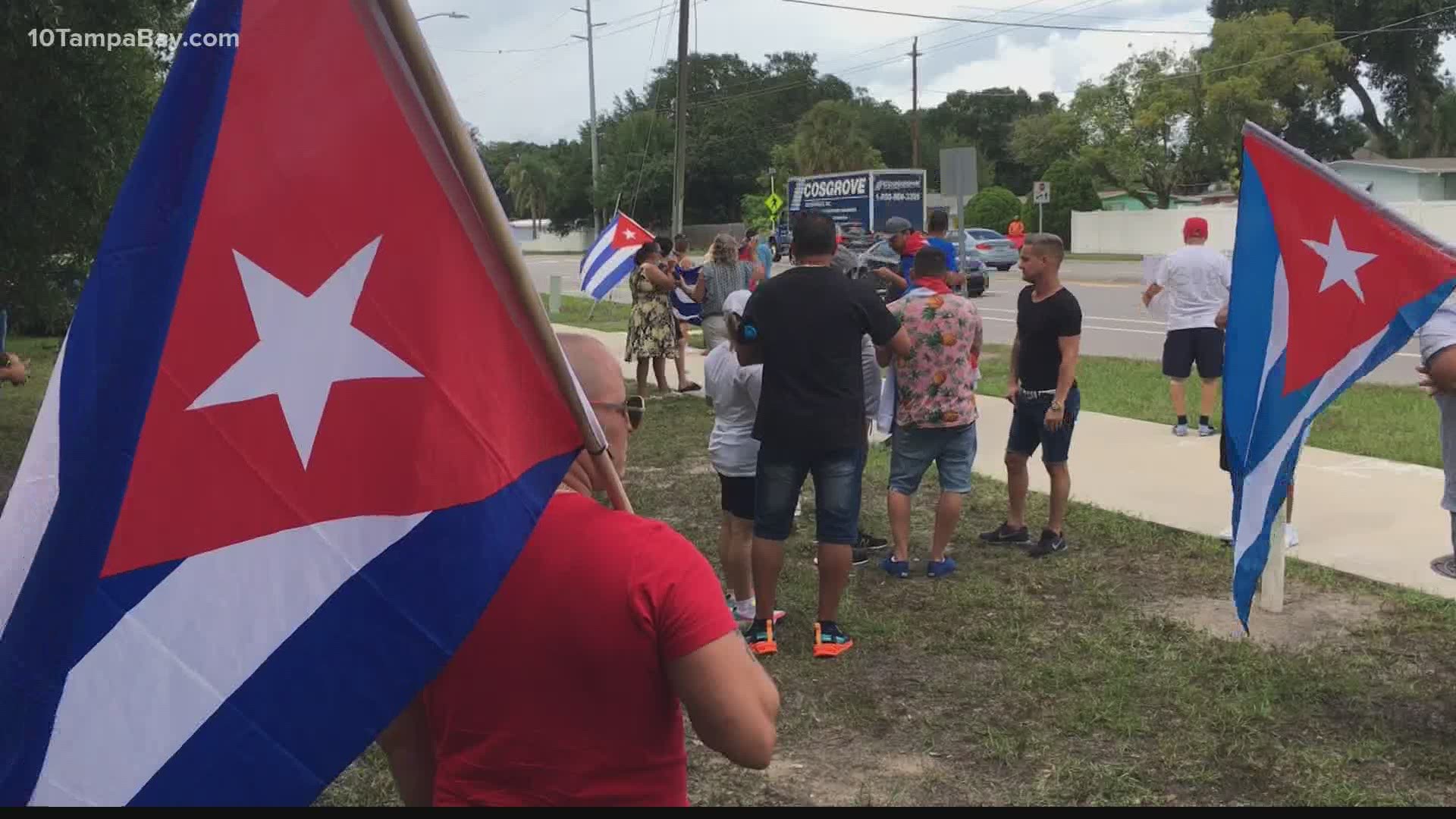FLORIDA, USA — In cities across South Florida, and even here in Tampa, people are taking to the streets in support of historic anti-government protests happening in Cuba.
The second most populous country in the Caribbean has not seen such government dissent since 1959 — when Fidel Castro led a revolution that overthrew then-president Fulgencio Batista. Since then, the Communist Party has been able to hold on to power, despite decades of U.S. sanctions.
However, the current turmoil the country is facing has reached its boiling point. Protests erupted in several Cuban cities and towns over the weekend which drew support from American leaders, including President Joe Biden and Florida Gov. Ron DeSantis.
On Wednesday, U.S. Rep Kathy Castor joined Tampa Bay area leaders to speak in solidarity with the people of Cuba, calling for a peaceful transfer of power in the country.
“The United States of America should stand with the people of Cuba now to encourage and work for that peaceful transfer of power," Rep. Castor said.
So, how did Cuba get to this point?
Well, for starters, the protests are reportedly being linked to high prices of goods and food shortages. Cuba is no stranger to economic turbulence, but the coronavirus pandemic placed the country in a position it hasn't been in, in nearly three decades.
In 2020, the government confirmed that its gross domestic product had shrunk by 11 percent. The pandemic played a large part in that decline with travel restrictions reducing tourist arrivals by 94 percent in 2021. Couple that with U.S. sanctions, which were ramped up under former President Donald Trump and still in place under President Biden, and the import-dependent country is now facing food and medicine shortages.
It's not just the impact the pandemic has had on Cuba's economy that's creating the turmoil, it's how it's currently impacting the Cuban people as well.
The island was relatively spared in 2020. Daily cases stayed under 100 for the majority of the year but have since skyrocketed. According to John Hopkins University, Cuba is currently seeing a weekly average of more than 5,000 cases. Deaths are also on the rise. In total, 1,579 have died due to COVID-19.
The last time Cuba saw protests on this scale was in the summer of 1994, during what was known as the Maleconazo uprising. Thousands of Cubans would flee the country on rafts and boats.
In response to the recent protests, Cuban President Miguel Díaz-Canel accused Cuban Americans of using social medial to create "dissatisfaction by manipulating emotions and feelings” of Cubans. Authorities appear determined to put a stop to the demonstrations, arresting some protesters and deploying more police.
What other people are reading right now:
- Oops: Stanley Cup damaged during Lightning championship celebration
- Looking to buy a home right now? Here are 5 tips from a housing expert.
- New video released as 5 people from the Tampa Bay area are linked to Capitol riot
- Protesters shut down highway in S. Florida in support of Cuban people; demonstrators march in Tampa
- When will it go away? Answers to FAQs about red tide
- A Frank Conversation: New podcast explores race, religion, politics and more
►Breaking news and weather alerts: Get the free 10 Tampa Bay app
►Stay In the Know! Sign up now for the Brightside Blend Newsletter

